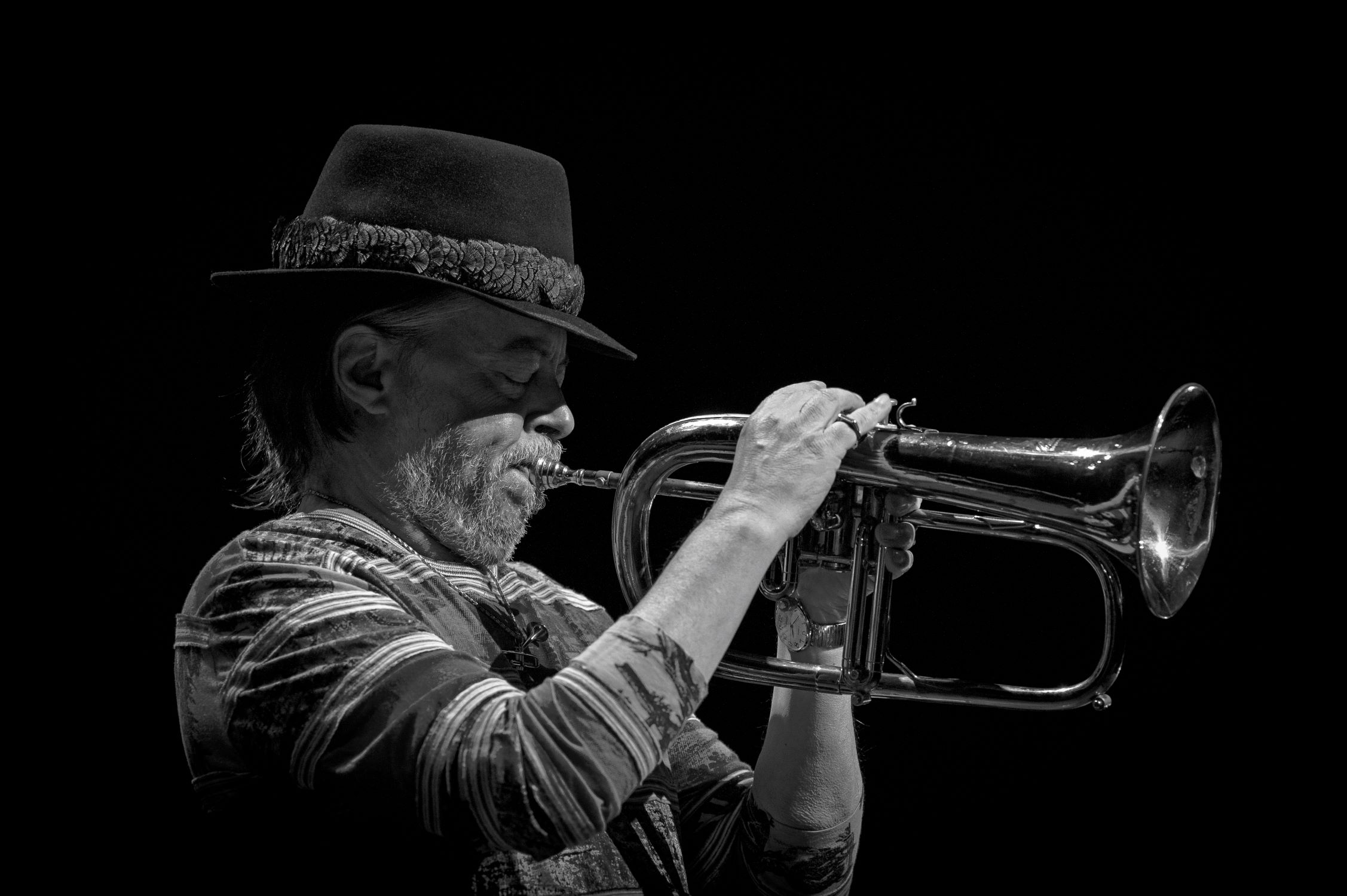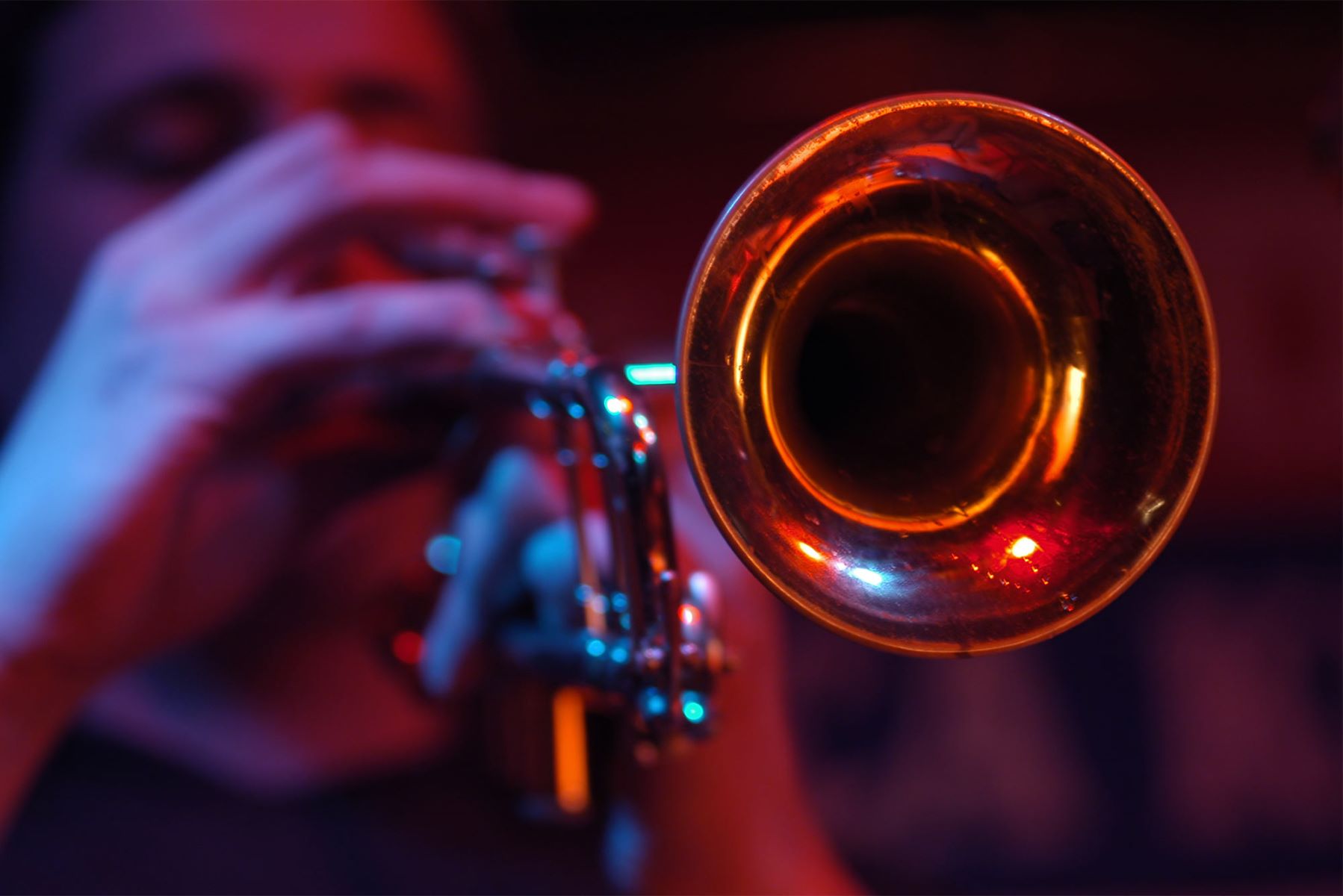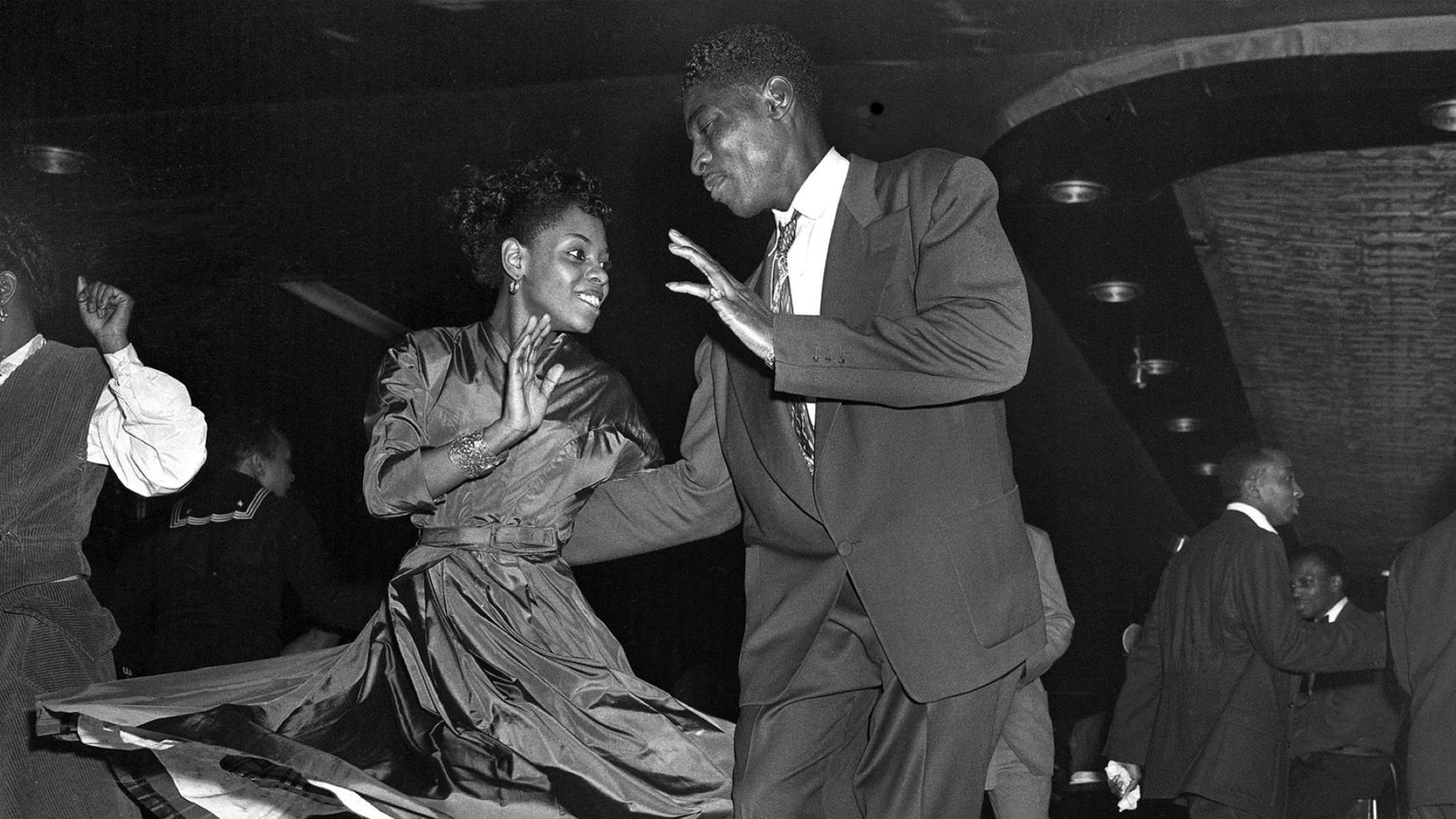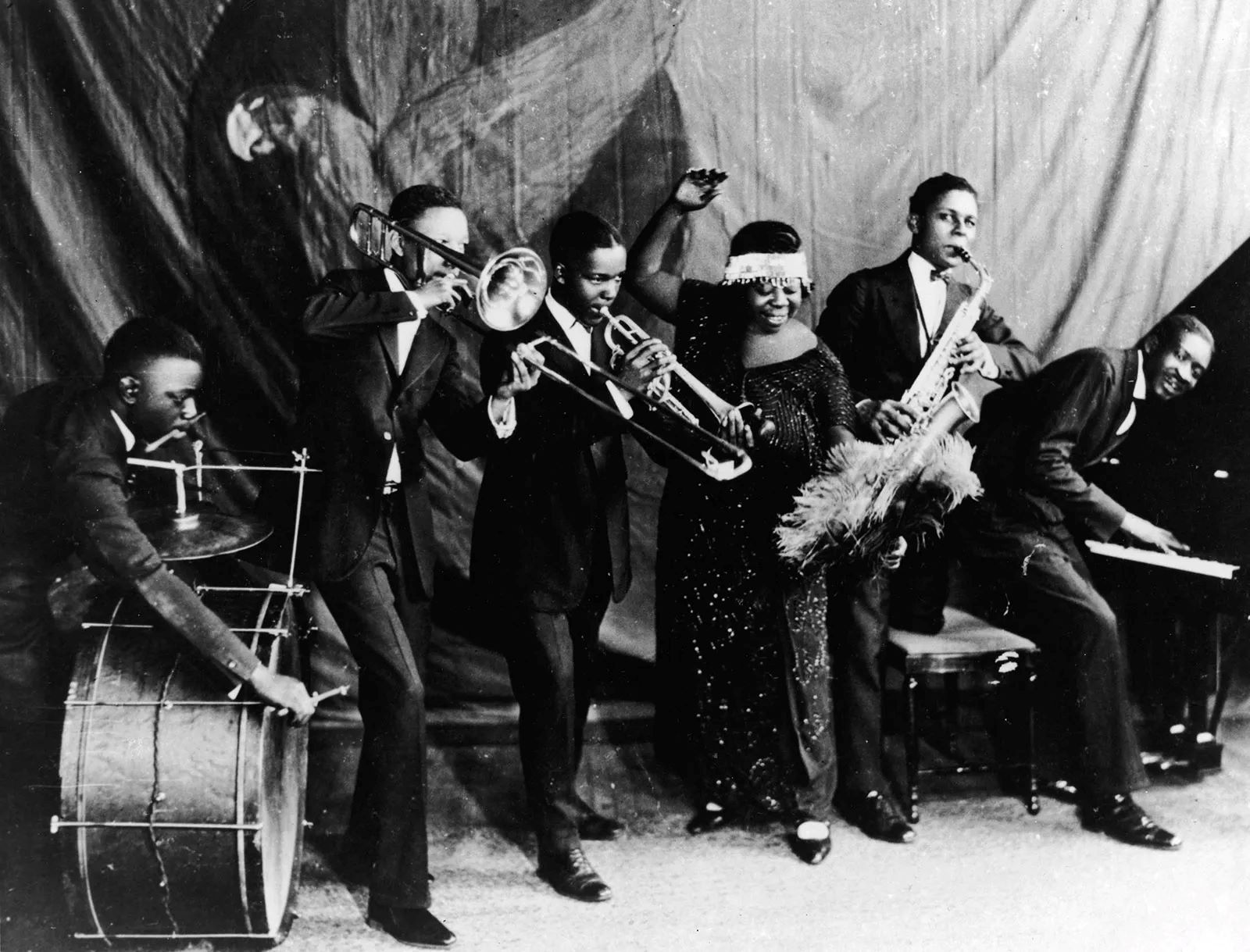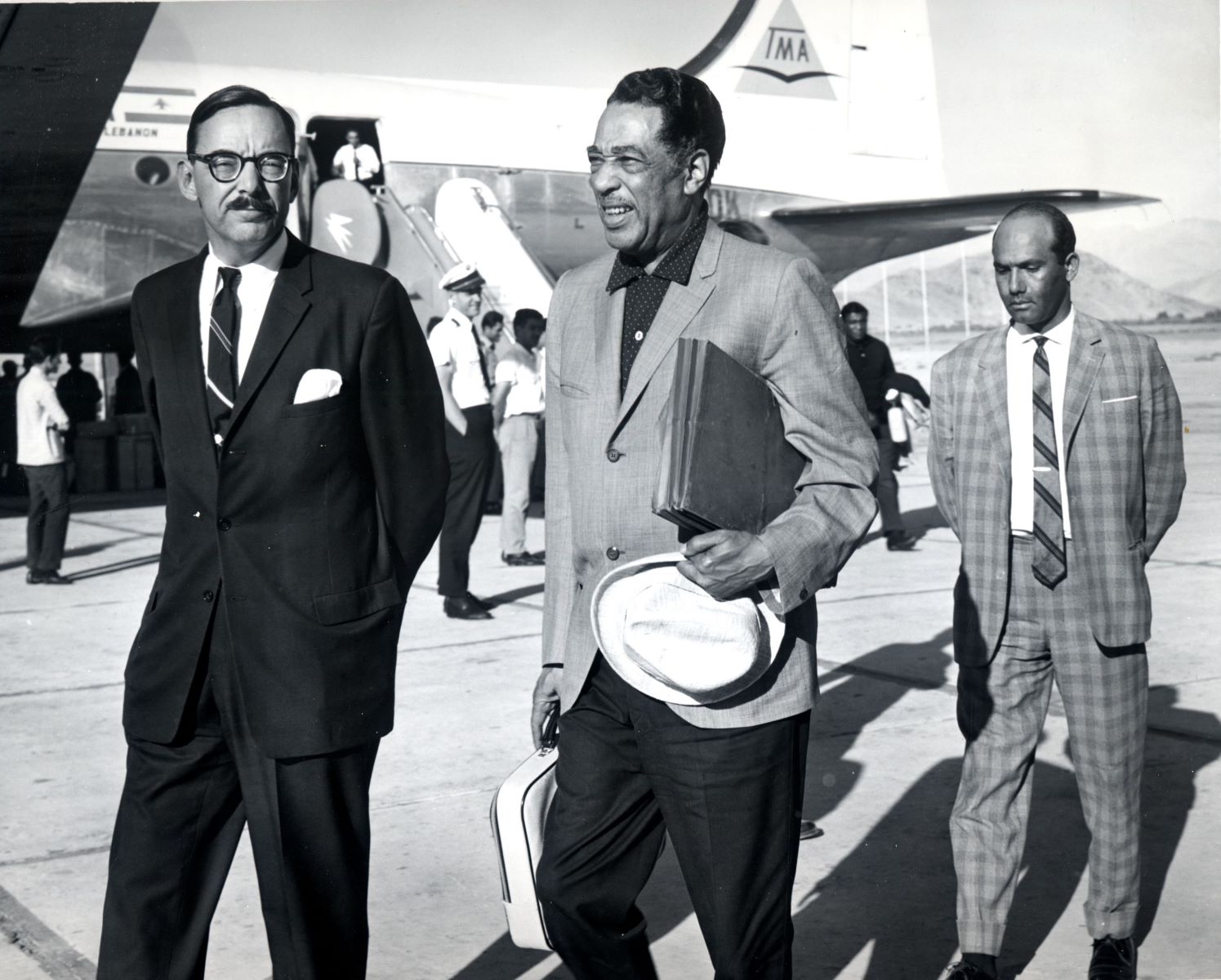

Jazz
Why Did Jazz Begin
Modified: February 24, 2024
Discover the fascinating origins of jazz and uncover the mysteries behind its creation. Explore the historical and cultural factors that sparked the birth of this iconic musical genre.
(Many of the links in this article redirect to a specific reviewed product. Your purchase of these products through affiliate links helps to generate commission for AudioLover.com, at no extra cost. Learn more)
Table of Contents
Introduction
Jazz is a unique and influential musical genre that has captivated audiences for over a century. Its infectious rhythms, improvisational nature, and emotional expression have earned it a special place in the hearts of music enthusiasts all around the world. But have you ever wondered how jazz came into existence? What were the factors that contributed to its birth and growth?
In this article, we will explore the fascinating origins of jazz and delve into the key events and individuals that shaped its development. From the rich traditions of African music to the influence of European classical music, we will uncover the diverse threads that wove together to create this innovative and dynamic genre.
Jazz emerged in the early 20th century in the bustling city of New Orleans, Louisiana. It was a melting pot of cultures and musical traditions, with influences from African, European, and Caribbean music blending together in a vibrant musical tapestry. New Orleans became the birthplace of jazz, serving as a hub for musicians to experiment and collaborate, resulting in the formation of a unique musical language that would change the course of music history.
As we journey through the history of jazz, we will encounter iconic figures such as Louis Armstrong, Duke Ellington, Charlie Parker, and Miles Davis, whose groundbreaking contributions pushed the boundaries of the genre and paved the way for its evolution.
From the lively swing era to the revolutionary bebop movement, and from the fusion experiments of the 1970s to the vibrant contemporary jazz scene, we will explore the various eras and sub-genres of jazz that have shaped its ever-evolving landscape.
So, sit back, relax, and embark on a musical journey as we uncover the fascinating story of jazz. Let’s delve into the rhythmic origins and the multitude of influences that birthed this extraordinary genre.
Origins of Jazz
To understand the origins of jazz, we must look back to the rich musical traditions of Africa. The rhythmic and melodic elements of African music played a vital role in shaping the foundation of jazz. The African diaspora brought these musical traditions to the Americas through the transatlantic slave trade, where they would later merge with European musical influences.
The syncopated rhythms and call-and-response patterns of African music served as the rhythmic backbone of jazz. The use of polyrhythms and intricate drumming techniques added a distinct flavor to the genre, setting it apart from other forms of music at the time.
Another significant influence on the development of jazz was European classical music. European composers such as Bach, Beethoven, and Mozart introduced complex harmonies and formal structures to the music. This blending of African rhythms and European harmonies created a unique hybrid known as jazz.
New Orleans, with its diverse cultural mix, played a pivotal role in the birth of jazz. The city’s African, Caribbean, and European influences, combined with the booming entertainment industry, created the perfect environment for jazz to flourish.
During the late 19th and early 20th centuries, African-American musicians in New Orleans began incorporating elements of blues, ragtime, and marching band music into their performances. These musicians, often self-taught, used their creativity and improvisational skills to develop a new form of music that would become known as jazz.
Jazz quickly gained popularity throughout New Orleans and beyond, spreading to other cities such as Chicago and New York. As jazz migrated, it absorbed influences from local musical traditions and evolved into different sub-genres, reflecting the cultural diversity and creative experimentation of the musicians.
The birth of jazz marked a significant turning point in music history. It broke away from the conventional rules and brought a new level of artistic freedom and self-expression. Jazz became a symbol of liberation and emerged as a powerful force in shaping social and cultural movements.
In the next sections, we will delve deeper into the key figures and pivotal moments in jazz history, exploring how the genre transformed and reinvented itself throughout the years.
Influences from African Music
African music has had a profound impact on the development of jazz. The rhythmic complexity and vibrant melodic elements of African music served as a key foundation for the genre. Let’s explore some of the specific influences from African music that shaped jazz as we know it today.
One of the most significant contributions from African music is the concept of polyrhythms. Polyrhythms involve the simultaneous playing of multiple rhythmic patterns, creating intricate and layered textures. This technique, rooted in African drumming traditions, became a fundamental element in jazz music. It added a sense of syncopation and swung rhythms that distinguished jazz from other musical genres of the time.
Call-and-response patterns, another characteristic of African music, also found its way into jazz. This musical conversation between different instrumentalists or vocalists became a crucial component of jazz improvisation. It allowed musicians to interact and engage with each other, creating a dynamic and lively musical experience.
Furthermore, the concept of improvisation in jazz can be traced back to African music traditions. In many African cultures, improvisation is a central part of musical performances. Musicians are encouraged to spontaneously create melodies and variations, showcasing their individual skills and creativity. This improvisational spirit infused jazz with a sense of freedom and innovation that continues to define the genre.
Other aspects of African music, such as the use of pentatonic scales and call-response vocal techniques, also influenced the development of jazz. The vibrant and emotive qualities of African music provided a foundation for jazz musicians to express themselves and bring a unique flavor to their performances.
It is important to recognize the invaluable contributions of African musicians and their cultural heritage to the evolution of jazz. Without the influence of African music, the genre would not have evolved into the vibrant and dynamic form of expression that it is today.
As we explore the history of jazz further, we will discover how these African musical influences merged with European classical music and other genres to create innovative and groundbreaking sounds.
Influence from European Classical Music
In addition to the African music traditions, European classical music played a significant role in shaping the development of jazz. The harmonies, formal structures, and instrumental techniques of European classical music influenced the evolution of jazz in profound ways.
European classical music introduced jazz musicians to the concept of complex harmonies. Composers such as Bach, Mozart, and Beethoven developed intricate chord progressions and harmonic relationships in their compositions. Jazz musicians began to incorporate these sophisticated harmonic concepts into their improvisations, adding depth and complexity to their performances.
Furthermore, the formal structures of European classical music provided a framework for jazz compositions. The use of sonata form, theme and variations, and other classical structures allowed jazz musicians to organize their musical ideas and bring a sense of cohesion to their compositions. This blending of classical formalism with the spontaneity of jazz improvisation helped shape the unique character of the genre.
Instrumental techniques from European classical music also influenced the way jazz musicians approached their instruments. The technical proficiency required to play classical music introduced jazz musicians to advanced playing techniques, allowing them to push the boundaries of their instruments. Saxophonists, for example, borrowed techniques from classical woodwind players, enabling them to achieve a greater range of expression and virtuosity in their performances.
Moreover, European classical music provided jazz musicians with a repertoire of melodies and themes to draw inspiration from. Jazz musicians often reinterpreted classical compositions, infusing them with their improvisational style and rhythmic sensibilities. This cross-pollination of classical and jazz elements resulted in unique and innovative performances that blurred the lines between the two genres.
The influence of European classical music on jazz is not limited to the early years of the genre. Throughout the history of jazz, composers and musicians have continued to draw inspiration from classical music, incorporating elements of it into their compositions and performances.
This fusion of African and European musical traditions created a fertile ground for jazz to thrive and evolve. The blending of rhythmic complexities from African music and harmonic innovations from European classical music laid the foundation for the expansive and ever-evolving nature of jazz.
In the upcoming sections, we will delve into the historical milestones and key figures who shaped the development of jazz, from the birth of jazz in New Orleans to its migration to other cities and the emergence of different sub-genres.
New Orleans and the Birth of Jazz
New Orleans, Louisiana, holds the distinction of being the birthplace of jazz. The city’s vibrant cultural mix and thriving music scene during the late 19th and early 20th centuries created the perfect conditions for the development of this groundbreaking genre.
The melting pot of cultures in New Orleans, including African, Caribbean, and European influences, served as a melting pot for musical ideas and traditions. The African rhythms and call-and-response patterns merged with European harmonies and formal structures, creating a unique musical language.
The city’s diverse neighborhoods, such as the famous Storyville district, became epicenters for musical performances, where musicians of different backgrounds would congregate and collaborate. African-American musicians, who often faced discrimination elsewhere, were able to find support and opportunities in New Orleans to showcase their talent and experiment with new sounds.
Jazz grew from a fusion of different musical styles that were popular in New Orleans at the time. The rhythmic syncopations of ragtime, the expressive vocals of blues, the brass bands that played at funerals and parades—these all contributed to the rich tapestry of influences that shaped jazz.
A key aspect of jazz’s birth in New Orleans was its emphasis on collective improvisation. Musicians would come together in jam sessions, building on each other’s ideas and creating spontaneous musical conversations. This collaborative and interactive nature became a hallmark of jazz and showcased the musicians’ skills and creativity.
New Orleans also produced many influential jazz pioneers who would shape the genre’s future. Names like Louis Armstrong, Jelly Roll Morton, and Sidney Bechet emerged from the city, each bringing their unique style and contributions to the development of jazz. Louis Armstrong, in particular, is often considered one of the greatest jazz musicians of all time, with his innovative trumpet playing and distinctive voice.
It’s important to note that jazz in its early days was not considered highbrow music. It was often associated with the working-class and marginalized communities of New Orleans. However, its infectious rhythms and expressive qualities began to gain popularity, eventually spreading beyond the city’s borders.
As jazz continued to evolve, it moved from the birthplace of New Orleans to other cities, such as Chicago and New York, where it would undergo further transformations and captivate new audiences.
In the next sections, we will delve into the key figures and pivotal moments in jazz history, exploring the swing era, the birth of modern jazz, and the fusion experiments that have propelled the genre into the contemporary era.
Key Figures in Jazz History
Jazz history is rich with pioneering musicians whose contributions have shaped the genre and left an indelible mark on music as a whole. These key figures have pushed the boundaries of creativity, innovation, and artistic expression, paving the way for the evolution of jazz. Let’s explore some of the most influential figures in jazz history.
Louis Armstrong, often referred to as the “Father of Jazz,” revolutionized the genre with his virtuosic trumpet playing and charismatic stage presence. His innovative improvisations and scat singing technique set a new standard for jazz musicians. Armstrong’s influence can be felt in every aspect of the genre, from his contagious energy to his enduring recordings.
Duke Ellington, a prolific composer, and bandleader, brought sophistication and compositional prowess to jazz. His orchestra, known as the Duke Ellington Orchestra, showcased complex arrangements and a wide range of musical styles. Ellington’s compositions, such as “Mood Indigo” and “Take the ‘A’ Train,” are considered classics of the jazz repertoire.
Charlie Parker, commonly known as “Bird,” was a virtuoso saxophonist and one of the primary architects of the bebop movement. His dazzling technique and innovative melodic improvisations expanded the possibilities of jazz. Parker’s recordings, such as “Ko Ko” and “Ornithology,” continue to inspire and challenge musicians to this day.
Miles Davis, a trumpeter, bandleader, and composer, was at the forefront of multiple jazz movements throughout his career. From leading the cool jazz movement in the 1950s to embracing jazz fusion in the 1970s, Davis consistently pushed the boundaries of the genre. His albums, including “Kind of Blue” and “Bitches Brew,” are hailed as some of the most influential and groundbreaking recordings in jazz history.
Ella Fitzgerald, often referred to as the “First Lady of Song,” was a renowned jazz vocalist known for her impeccable technique, scat singing ability, and emotional delivery. Her interpretations of jazz standards, such as “Summertime” and “Mack the Knife,” continue to captivate audiences and serve as a benchmark for vocalists worldwide.
John Coltrane, a legendary saxophonist and composer, expanded the possibilities of jazz with his innovative harmonic approach and intense improvisations. Coltrane’s exploration of modal jazz and his landmark album “A Love Supreme” showcased his commitment to pushing the boundaries of the genre and exploring spirituality through his music.
These are just a few of the many notable figures in jazz history who have shaped the genre and left an enduring legacy. Each of these individuals brought their unique style, vision, and virtuosity to the music, influencing subsequent generations of musicians and pushing the boundaries of what jazz could be.
The contributions of these key figures, along with countless others, have made jazz a dynamic and ever-evolving art form. As we continue our journey through jazz history, we will explore the different eras and styles that emerged, each reflecting the influence of these extraordinary musicians.
Jazz Moves to Chicago and New York
After its birth in New Orleans, jazz began to spread its wings and make its way to other cities, particularly Chicago and New York. These cities became important hubs for the development and dissemination of jazz, contributing to its growth and evolution.
In the 1920s, Chicago emerged as a major center for jazz. Musicians from New Orleans, seeking better opportunities and escaping the racial tensions of the South, migrated to Chicago, bringing their music with them. The city’s thriving nightlife and bustling entertainment scene provided a platform for jazz musicians to showcase their talent.
One of the key figures in the Chicago jazz scene was Louis Armstrong, who forged a successful career there in the late 1920s. Armstrong’s innovative trumpet playing and charismatic stage presence captivated audiences and helped establish him as one of the most influential musicians in jazz history.
Chicago also saw the rise of jazz pianist and bandleader, Jelly Roll Morton. Morton was known for his superb technical skills and his ability to blend different styles, including ragtime and Latin influences, into his compositions. His recordings and compositions, such as “Black Bottom Stomp” and “Jelly Roll Blues,” showcased his musical genius and had a lasting impact on the development of jazz.
By the 1930s, the torch of jazz had passed to New York City, which emerged as the new epicenter of the genre. The vibrant jazz clubs, such as the Cotton Club and the Savoy Ballroom, attracted both local and touring musicians, fostering a vibrant and competitive atmosphere.
During the swing era, big bands led by bandleaders like Duke Ellington, Count Basie, and Benny Goodman dominated the jazz scene in New York. The energetic and rhythmic swing music became immensely popular and spurred a new era of dancing and socializing.
New York also played a significant role in the rise of the bebop movement, led by virtuosic musicians like Charlie Parker, Dizzy Gillespie, and Thelonious Monk. These artists shifted the focus from big bands to smaller ensembles, emphasizing intricate improvisations and complex harmonies. The bebop revolution forever changed the landscape of jazz and influenced subsequent generations of musicians.
Both Chicago and New York continued to be important centers for jazz in the years that followed, as the genre diversified and embraced new styles and influences. Musicians like Miles Davis, John Coltrane, and Charles Mingus emerged from these cities, pushing the boundaries of jazz and exploring new musical territories.
As jazz moved from New Orleans to Chicago and New York, it found new audiences, new influences, and new creative possibilities. The contributions from these cities, along with the musicians who called them home, played a crucial role in shaping the diverse and vibrant world of jazz.
As we further explore the history of jazz, we will delve into the various eras and sub-genres that emerged from these cities, uncovering the remarkable artists who propelled the genre forward.
The Swing Era
The swing era, which spanned from the mid-1930s to the late 1940s, was a golden age for jazz. It was a time when big bands reigned supreme and swing music became the soundtrack of a generation. The energetic rhythms, catchy melodies, and infectious danceability of swing captivated audiences worldwide, making it one of the most popular forms of music during that time.
Central to the swing era were the big bands and their charismatic bandleaders. Duke Ellington, Count Basie, Benny Goodman, and Glenn Miller were among the prominent figures who led these large orchestras, known for their driving rhythm sections, vibrant brass sections, and tight arrangements.
The big bands brought together virtuoso instrumentalists who dazzled audiences with their solos and ensemble playing. These ensembles featured sections of saxophones, trumpets, trombones, and a rhythm section, creating a rich and powerful sound that defined the era.
The swing era also showcased the talents of outstanding vocalists, such as Ella Fitzgerald, Billie Holiday, and Frank Sinatra. Their smooth and expressive voices beautifully complemented the big band sound, adding a touch of romance and emotion to the music.
The popularity of swing music gave rise to a vibrant dance culture. People flocked to ballrooms and clubs to dance the Lindy Hop, the Jitterbug, and other energetic dances that perfectly matched the lively rhythms of swing. These dances provided a platform for individuals to showcase their improvisational skills and express themselves through movement.
Notable songs from the swing era, such as “In the Mood” by Glenn Miller, “Take the ‘A’ Train” by Duke Ellington, and “Sing, Sing, Sing” by Benny Goodman, have become timeless classics that continue to be cherished and performed today.
The swing era also marked a significant milestone in the fight against racial segregation. While racial divisions still persisted, integrated bands and mixed audiences became more common, especially in the North, where the big bands often toured. This breaking down of barriers through music laid the groundwork for the subsequent years of social change.
As the swing era drew to a close in the late 1940s, new musical styles began to emerge, challenging the dominance of big bands. Bebop, with its emphasis on small ensemble playing, intricate improvisations, and complex harmonies, signaled a shift in the jazz landscape and marked the beginning of a new era.
Nevertheless, the swing era remains a beloved chapter in jazz history. Its uplifting and danceable music continues to inspire and bring joy to listeners of all ages, proving that swing indeed had a significant impact on the evolution of jazz.
In the following sections, we will explore the birth of modern jazz with the advent of bebop and delve into the various sub-genres and stylistic innovations that have kept jazz relevant and evolutionary.
Bebop and the Birth of Modern Jazz
In the early 1940s, a group of pioneering musicians ushered in a new era in jazz with the advent of bebop. Rebellious, complex, and filled with virtuosic improvisation, bebop revolutionized jazz and laid the foundation for modern jazz as we know it today.
Bebop emerged as a response to the perceived limitations of the big band swing era. Musicians such as Charlie Parker, Dizzy Gillespie, and Thelonious Monk sought to break free from the constraints of danceable rhythms and formulaic arrangements. They aimed for a more intellectual and adventurous form of jazz that allowed for greater freedom of expression.
Bebop was characterized by its fast tempos, intricate melodic lines, and complex harmonies. Musicians traded in the large orchestras for small ensembles, often featuring a quartet or quintet setup. This smaller format allowed for more interplay and spontaneous improvisation among the musicians.
Charlie Parker, known as “Bird,” was one of the most influential figures in the development of bebop. His lightning-fast saxophone lines, innovative phrasing, and harmonic complexity pushed the boundaries of what was considered possible in jazz improvisation. Parker’s recordings, including “Confirmation” and “Now’s the Time,” remain essential listening for jazz enthusiasts.
Dizzy Gillespie, a virtuosic trumpeter and composer, was another pioneering figure of bebop. His dazzling technique and blistering solos captivated audiences, and his compositions, such as “Salt Peanuts” and “A Night in Tunisia,” showcased the bebop style with their intricate melodies and rhythmic complexity.
Thelonious Monk, a pianist and composer, brought a unique and idiosyncratic approach to bebop. His unconventional compositions, featuring dissonant chords and angular melodies, challenged the conventions of jazz at the time. Monk’s contributions to bebop, including compositions like “Round Midnight” and “Straight, No Chaser,” continue to influence generations of musicians.
Bebop represented a departure from the more accessible and commercially viable swing era. Its complexity and intellectual nature made it less appealing to a mainstream audience. However, bebop became highly influential among musicians and critics, shaping the direction of jazz in the post-war era.
The birth of bebop marked a turning point in jazz history, as it set the stage for the exploration of new rhythmic, harmonic, and improvisational possibilities in the coming decades. It laid the foundation for modern jazz and inspired subsequent movements and genres, including modal jazz, free jazz, and fusion.
As we continue our journey through jazz history, we will delve into the evolution of the genre, exploring the diverse sub-genres that emerged and the innovative musicians who pushed the boundaries of jazz beyond bebop.
Jazz Fusion and Contemporary Jazz
In the late 1960s and 1970s, jazz experienced another transformative wave with the emergence of jazz fusion. Jazz fusion blended elements of jazz with rock, funk, and other genres, resulting in a fusion of styles that pushed the boundaries of what jazz could be. This fusion gave birth to a new and dynamic sound that appealed to a broader audience.
Jazz fusion embraced electric instruments, including electric guitars, keyboards, and synthesizers, giving the music a more amplified and energetic quality. Artists like Miles Davis, Herbie Hancock, and Joe Zawinul were at the forefront of this movement, experimenting with electronic sounds and incorporating elements of rock and funk into their compositions.
Miles Davis’s album “Bitches Brew” is often regarded as a landmark in jazz fusion, with its improvisational freedom, dense textures, and integration of electronic instruments. The album’s experimental nature challenged traditional jazz conventions and paved the way for future explorations in the genre.
Herbie Hancock’s fusion-oriented album “Head Hunters” also made a significant impact. Its blend of jazz, funk, and electronic elements, especially the iconic track “Chameleon,” resonated with a wide audience, propelling the album to commercial success and cementing its place in jazz history.
As jazz fusion continued to evolve, artists like Chick Corea, John McLaughlin, and Weather Report expanded the genre’s boundaries further. These musicians fused jazz with elements of Latin music, world music, and even experimental rock to create a diverse and eclectic sound.
Contemporary jazz, as the name suggests, refers to the ongoing evolution of jazz in more recent times. This genre encompasses various sub-genres and styles that reflect the current musical landscape and the influence of popular music.
Contemporary jazz artists fuse jazz with elements of R&B, hip-hop, pop, and electronic music, creating a blend that appeals to a wide range of listeners. Musicians like Robert Glasper, Esperanza Spalding, and Kamasi Washington have embraced this approach, infusing their compositions with soulful grooves, rich harmonies, and genre-bending experimentation.
Technology has played a significant role in the development of contemporary jazz, allowing for new sonic possibilities and creative experimentation. Artists have embraced digital recording techniques, sampling, and electronic instruments to push the boundaries of jazz and create innovative sounds.
Modern jazz is a living and breathing art form, constantly evolving and adapting to the zeitgeist of the times. It continues to be a platform for exploration and self-expression, as artists interpret and assimilate various musical influences into their compositions.
As we explore contemporary jazz and its many sub-genres, we will witness the continuing evolution of the genre, celebrating the creativity and innovation that keeps jazz relevant and captivating in the present day.
Conclusion
Jazz, with its rich history and diverse influences, has captured the hearts and ears of music enthusiasts around the world. From its origins in African and European music traditions to its evolution through various eras and sub-genres, jazz has remained a dynamic and ever-evolving art form.
The rhythmic complexity and improvisational nature of African music, combined with the harmonies and formal structures of European classical music, laid the foundation for the birth of jazz in New Orleans. The city’s cultural diversity and vibrant music scene provided a fertile ground for jazz to flourish.
The swing era saw jazz reach new heights of popularity as big bands dominated the scene, bringing joy and danceable rhythms to audiences worldwide. The advent of bebop in the 1940s marked a departure from the accessible sounds of swing, pushing the boundaries of jazz with intricate improvisations and complex harmonies.
Jazz fusion emerged in the late 1960s, blending jazz with rock, funk, and other genres. This fusion created a fresh and energetic sound that appealed to a broader audience and opened up new possibilities for musical exploration. Contemporary jazz continues to evolve, incorporating elements of popular music and utilizing technology to create innovative and genre-bending compositions.
Throughout its history, jazz has been shaped by countless influential figures, from Louis Armstrong and Duke Ellington to Charlie Parker, Miles Davis, and beyond. These musicians pushed the boundaries of the genre, challenging conventions and leaving an indelible mark on the art form.
Today, jazz remains a thriving and influential genre, attracting new generations of musicians and listeners. It serves as a platform for self-expression, improvisation, and creative exploration, bridging cultural divides and inspiring countless artists around the world.
As we conclude our exploration of jazz, let us celebrate the diversity, innovation, and timeless beauty of this extraordinary genre. Whether experiencing the swinging rhythms of the big bands, the adventurous improvisations of bebop, the fusion experiments of jazz fusion, or the contemporary sounds of modern jazz, let jazz take you on a journey of emotion, expression, and musical exploration.

